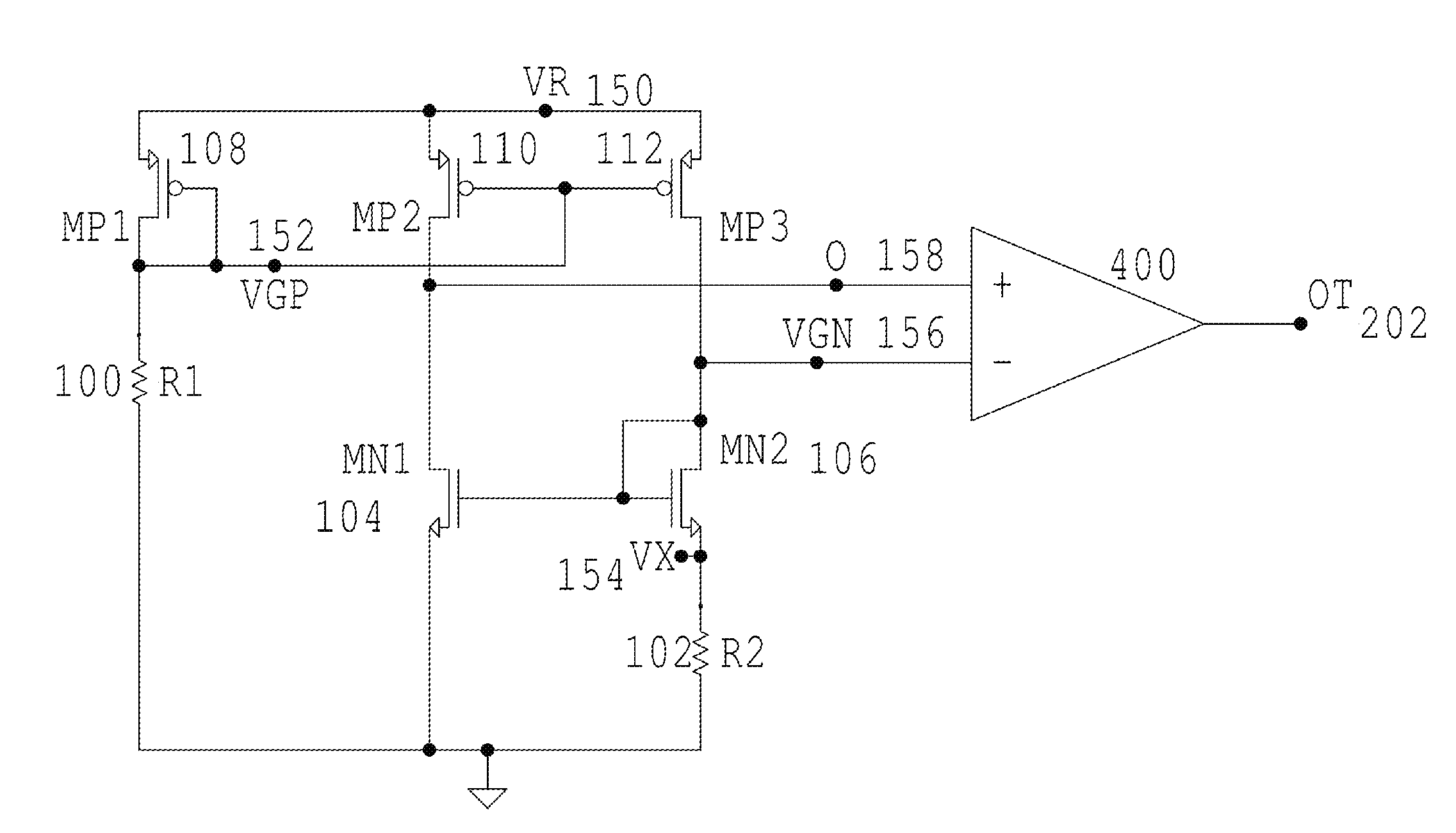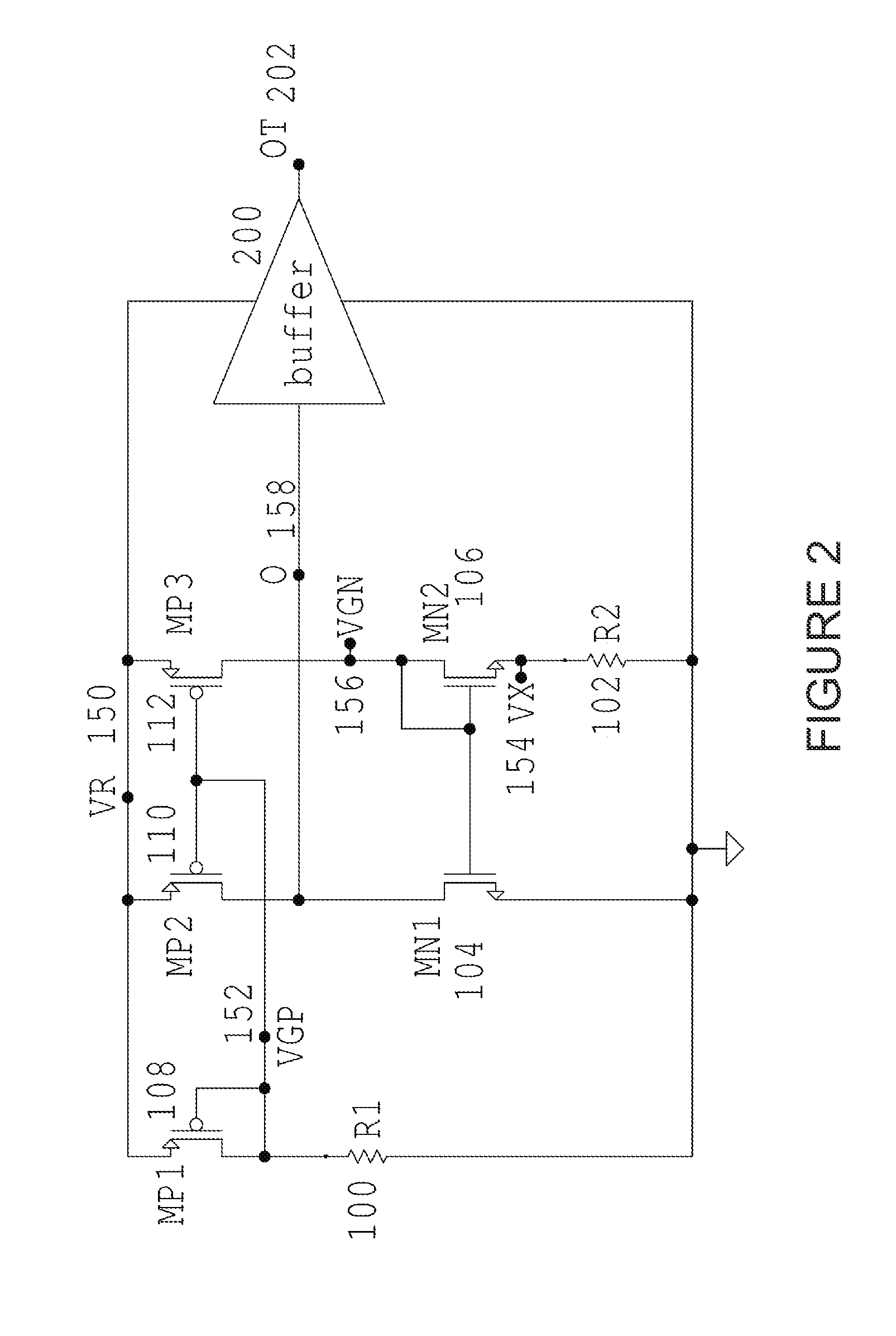Temperature-stable CMOS voltage reference circuits
a voltage reference circuit and temperature-stable technology, applied in the field of electromechanical circuits, can solve the problems of inability to fabricate, cost reduction, and said disadvantage is a very significant factor, and achieve the effect of low quiescent current and few circuit branches
- Summary
- Abstract
- Description
- Claims
- Application Information
AI Technical Summary
Benefits of technology
Problems solved by technology
Method used
Image
Examples
Embodiment Construction
[0032]The following circuit diagrams of the present invention, illustrated in the figures, can be understood by a person having ordinary skill in the art, e.g., an electrical engineer who designs integrated circuits using common-practiced techniques including hierarchical circuit design with schematic-entry tools. Integrated circuit techniques for properly biasing circuit junctions and methods for properly biasing CMOS body junctions, and permutations thereof, are also understood by a person having ordinary skill in the art. Thus, such commonly known techniques are incorporated. Furthermore, for purposes of clarity and brevity, like elements and components may bear the same designations and numbering throughout the figures. Moreover, N-type MOSFET (metal-oxide-semiconductor field-effect transistor) can be referred to as NMOS and P-type MOSFET (metal-oxide-semiconductor field-effect transistor) can be referred to as PMOS.
[0033]FIG. 1 illustrates a comparator mode CMOS circuit design ...
PUM
 Login to View More
Login to View More Abstract
Description
Claims
Application Information
 Login to View More
Login to View More - R&D
- Intellectual Property
- Life Sciences
- Materials
- Tech Scout
- Unparalleled Data Quality
- Higher Quality Content
- 60% Fewer Hallucinations
Browse by: Latest US Patents, China's latest patents, Technical Efficacy Thesaurus, Application Domain, Technology Topic, Popular Technical Reports.
© 2025 PatSnap. All rights reserved.Legal|Privacy policy|Modern Slavery Act Transparency Statement|Sitemap|About US| Contact US: help@patsnap.com



